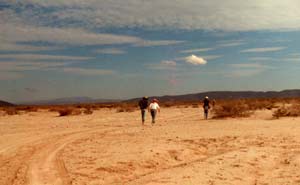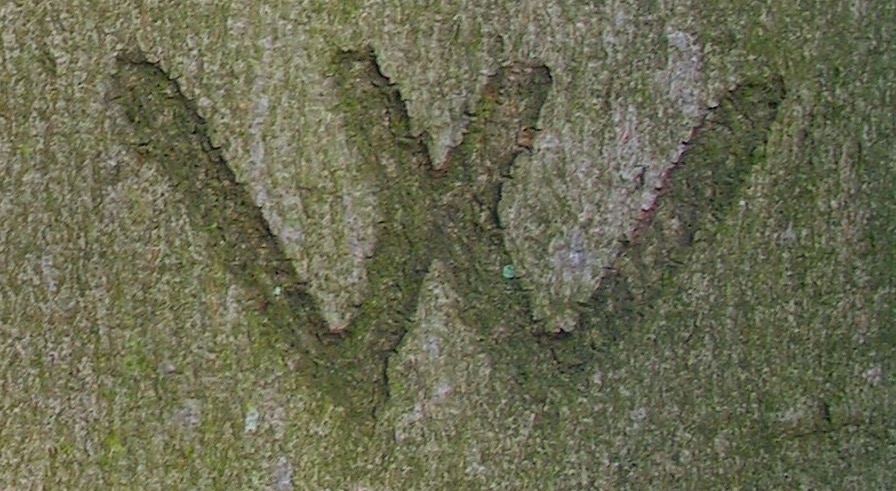Sound Installations and Composed Environments
The Zone of Silence Story
by Hildegard Westerkamp and Norbert Ruebsaat
an acoustic environment for a group exhibition of the "Zone of Silence Project", Museum of Quebec, Quebec City, Dec 85/Jan 86
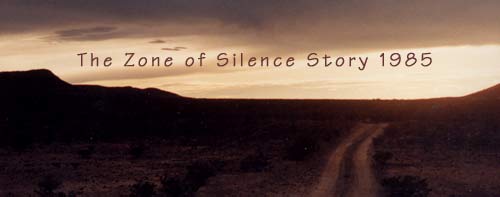
In December/January of 1984/85, twelve artists from four cultures camped together in the so-called Zone of Silence in north central Mexico to explore the desert environment through their respective disciplines and make art. The participants were: Richard Martel, visual artist; Silvy Panet-Raymond, choreographer/dancer; Lise Labrie, sculpturess; and Jeanne McDonald-Pourier, poet; from Quebec, Canada.-Wanda Campbell, writer; from the United States.-Domingo Cisneros, sculptor and organizer of the "Zone of Silence Project"; Benjamin Medel, filmmaker; Francisco Perez Garcia, visual artist and poet; Gloria Cano, historian; Carlos Majul, filmmaker; from Mexico.-Norbert Ruebsaat, poet/writer; Hildegard Westerkamp, composer; from British Columbia, Canada.- and the two children Ayesha Cisneros (Quebec) and Sonja Ruebsaat (British Columbia).
The Zona del Silencio is known for its strange landscape formations, unusual plant and animal life, for its odd meteorological activity, and for the fact that the earth's magnetic field seems to have a hole here. Tape recorders don't work in parts of the Zona, compasses go mad, etc.
The Zone of Silence has been studied by scientists (in 1974, the Allende Meteorite landed there, causing a flurry of research activity by NASA), by Native shamans (the country has numerous ritual and healing sites) but never by contemporary urban-based artists.
We camped in the Zone, in an Apache ruin, and did art events, performance, photography, recording, sound-making, story-telling, sculpture, poetry. Zone of Silence Story is an account of some of these adventures. It's made from environmental sounds, poems, stories, music, conversation, plant sounds, rock noise and cricketsong.
Notes to the Acoustic Installation
One of the most striking experiences in very quiet environments is the emergence of the desire to make sounds, language and music. It is striking because the constant bombardment of sound we experience in cities all too often puts us out of touch with this desire.
Zone of Silence Story is an attempt to recapture some of this primary feeling. It begins with a variety of ambiences – nighttime with crickets, setting up camp; quiet day ambience, etc.-and as the piece progresses, it involves the listener more and more in the activity of sound and word making.
1) The first sound on the tape comes from clapping and foot stomping inside the remains of a desert water reservoir. Two parallel walls stand about a metre and a half apart and three to four metres high. The change in sound colour which one hears results from making sound in different parts of this space. The clarity of the soundÑone can hear the subtle changes in harmonics-is possible because of the total silence that surrounded the reservoir. It is an unusual sound, intended as a fanfare to introduce the piece.
2) Cricket's Nightvoice and Arrival Campsite Ambience. It's dusk. A group of us has just arrived, joining the others who have already been camped at the site for a week. We have to hurry to unpack and pitch our tents before dark. The sound elements are: musicians with drums and a horn and voices ushering us into camp; crickets; voices in three languages (Spanish, French, English); children's voices.
3) Rockstories. The desert was strewn with the most amazing rocks. Everyone had their own little rock collection. One day Norbert decided to play a game with Sonja, 7, and Ayesha, 9. They put their rock collection of the day between them on the ground and each of them had to take a turn picking out a rock, looking at it, and then telling a story about it. This section records some of these stories, the talk around them, and poems that Norbert wrote afterwards about the event. Some of the percussive sounds are the rocks, which have a high degree of metal in them, clinking together. Other rock sounds come from holding a handful of small meteorites (that fall like a kind of hail in the Zone) and rubbing them against each other.
4) Sonic Meditations and Star Language. Everyone is lying, star-shaped, heads together at the centre of camp, looking at the stars and doing sound/voice explorations. The event lasted several hours. This short section is an excerpt of the longer recording and concentrates on the word "silence" spoken in three languages. Norbert later composed a poem series, "Star Language," which brings together the sound of the crickets with the image of stars. He speaks it here, as the cricket sound begins to modulate in pitch as a result of tape speed changes. By chance one night a single cricket "sang" directly into Hildi's microphone. Because it was such a close up recording, it lent itself particularly well to this kind of "treatment" (ie. speed manipulation) in the studio. Slowed down to half and quarter speed, this tiny sound begins to disclose its inner complexity and structure.
5) The Truth is Acoustic. In the absence of found sound in the environment (it was almost totally silent) Hildi went out and made sounds. Since the plants, especially the cacti, were all thick and suggested interior spaces, she began to pluck on their spines, rub and caress their surfaces, pound on them with an improvised drumstick. She recorded the resulting sounds very close up, and later worked with these in the studio. After watching her and hearing the recordings, Norbert composed a series of poems.
Norbert says about his poems: "In making the poems for this installation, I was guided by my continuing desire to make language that is of a place and speaks as part of a larger (re)enactment of that place. Hence the music and photos."
"The 'poems' that emerge should thus be heard as points of human disclosure or orientation in a narrative that is longer and vaster than the human voice. The words become waysigns, nodes of thought or points of new departure in a journey which is often performed in silence-or rather, within the sounds of the actual landscape."
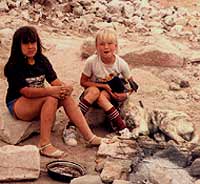
Imagine the world
trying to get inside this plant.
Knocking on it
as one would on a sealed chamber.
The spines snarl angrily
like dogs chained to a doorpost.
The meat resists
the hand or the knife,
and when you finally enter
you're already lost in infinity.
In tasture or text,
I mean texture or taste,
in pulchre-
it speaks
back at you hollowly
as if it were its own sound.
Already a magical potion:
maguey, ocotillo, cardenche,
mezcal, sotol-
the infinite ear.
CREDITS
This Installation was originally produced for a group exhibition of the Zone of Silence Project in the Museum of Quebec, Quebec City, in December 1985.
Rock photos and plant close-ups by Hildegard Westerkamp.
Rock arrangements by Jeanne MacDonaldÐPourier.
Other photos by Norbert Ruebsaat.
Cactus Dance by Sonja Ruebsaat.
Video and film documentation by Carlos Majul and Benjamin Medel.
"Mohovamec: Meeting Place" by Richard Martel.
"Chichimeca Resurrection" by Domingo Cisneros.
"Universal Symbols" by Lise Labrie.
"Birdsnest Place" by Sonja and Norbert Ruebsaat.
Zone of Silence Acoustic Installation by Hildegard Westerkamp;
with poems and reading by Norbert Ruebsaat, additional story and voice material by Ayesha Cisneros and Sonja Ruebsaat, musical excerpts from Cantata Chichimeca, Dawn Concert by U. Calitka, Sonic Meditations by Project participants.
Reading includes: Art Camp, The Fox, Rock Stories, Birdsnest Place, Star Language, The Truth is Acoustic, The Plants, The Infinite Ear, Walking Around.
Thanks to Domingo Cisneros and Wanda Campbell for organizing the Zone of Silence Project and for acting as its over-all leaders.
Thanks also to all Project participants for their voices, activities, sound-making contributions.
Ayesha Cisneros, 9, and Sonja Ruebsaat, 7, participated actively in the making of Zone of Silence Story, and the piece is dedicated to them.
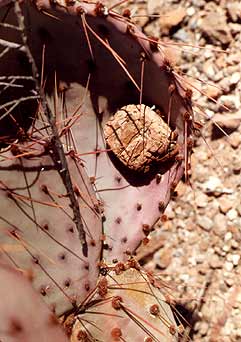
ART CAMP
Well, it's like being a kid
and it's art camp
Summer camp - you simply
transform things
with the power of the sun.
Your hand reaches in
and the summer comes down
and changes the world for you.
It's fun,
it's camp,
it's summer art camp.
Or it's like being on Mars:
you camp out on Mars for a while
to see the earth from.
*
by Norbert Ruebsaat
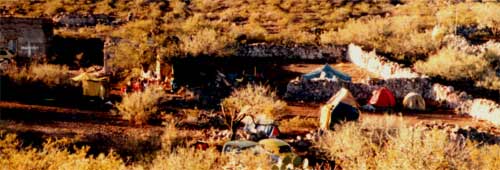
THE FOX
The fox looks at me
It is not a fox
It looks away.
It looks away from itself
and from me.
Who told it to be a fox?
Who found it here?
The fox finds me
by mistake
and throws me away again.
It doesn't want to be a fox.
It doesn't want to be me.
It's just the desert,
that's all.
*
by Norbert Ruebsaat

ROCK STORIES
See the rocks
nothing but stories
Held there:
you take
your rock by the hand
They're friends about that place,
your hand wants to know
how to move there,
the rock
tells it.
They go on journeys,
the rocks telling stories
all along--
each place is a story--
see? see?
The hand knows,
wants to remember this.
Once the rocks had eyes
but then the mountain fell down
and crushed them.
The rock's eyes
went underground
with minerals
twinkling there.
Then a big sea came,
It washed up all those rocks,
it washed up all those eyes,
like fish.
All those fish lying
on top of the desert now,
telling you things
about olden time.
Rocks are words,
the words dance.
They want to be movements,
sing to the music,
that's why they look for the hand.
The hand knows
it was a place once too,
it takes
the rock-by-the earth.
Moves it,
makes
the old desert dance,
and the rocks
happy again
like grandpa giggling.
One magic rock,
two magic rocks,
three magic rocks.
I put them in a bundle,
shake them up with some spit,
put in some dog's breath --
and some wind and some hair and some leaves--
See that willow tree
over there
where the leaves just
blew off
just like that?
That's my rock doing it from here,
it's not me.
*
by Norbert Ruebsaat
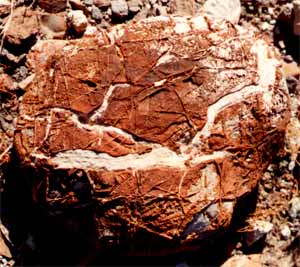
BIRDSNEST PLACE
This is a story
about the Birdsnest Place.
Sonja and I made it: it is a story
about the sky - and - the - earth.
The sky came down to the earth
to see what was going on,
to feel where it was warm.
It kissed the earth there.
The sun went into birds and trees.
It went
into the eyes of eggs.
Then the rocks came lumbering,
dinosaurs out of the earth,
out of their past,
out of holes in the ground.
The blind rocks
wanted to see what was going on.
They made all that rock noise.
The rocks
shaped themselves into eggs
so they could know about that place,
they would not break there.
They looked like eggs now,
they could see the sky.
They watched the birds coming down
to make their nests inside those eggs.
The rocks winked at them.
This is a story about the rock place
and the sky - fell - down - to - the - earth - place.
The rocks fooled those birds
and laid themselves inside their nests.
That's how they knew.
*
by Norbert Ruebsaat

STAR LANGUAGE
Where are the stars,
do you see them?
Walking out of the sky
on their long stilts.
Each star wants to be
its own sound,
but it's crowded, too
noisy up there.
They fall down,
they tinkle,
they speak.
Each star tells you its story,
invites you over
for the evening.
One star,
two stars,
three stars.
The spaces between them
is the story, those black parts.
You make the words,
you string those stars together,
you can ride
like on a swinging bracelet.
The spaces between them are imaginary.
The stars got together
with all their jewels
in the sky.
so many jewels, each star
holding out its own hand,
holding out its own star
like a lantern.
The desert such a dark place,
the stars snuck down
with their words
into those dark places,
snuck inside those cricket bodies
like a laugh.
Got your ears
to make that sound with?
They went into the black
body of the earth
and thought the crickets' thoughts.
It's hard to be a night in the desert
without the crickets.
They went into those crickets' throats.
You make it with stars
you make it with the skin
of the desert night.
You stitch those two together,
sky and earth.
You find it with
your cricket voice.
*
by Norbert Ruebsaat
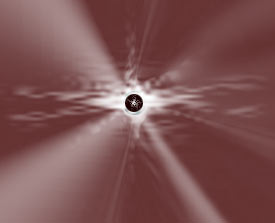
THE TRUTH IS ACOUSTIC
Ocotio.
Gurbanadoro.
Sangre de grado.
Candelia.
Bisnaga.
Bjexitos.
Palma del desierto.
Planta de la chiba.
Wisache.
Maguey.
Nopal.
The truth is acoustic.
*
by Norbert Ruebsaat
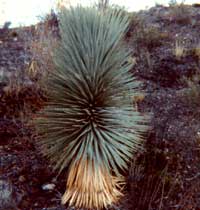


THE PLANT
The plant sits there.
It stares me down each time I try.
It doesn't move.
It doesn't seem to move.
Even when I glance away quickly
and then glance back
it hasn't moved.
Or seems not to have moved.
It is uncanny that plants
can stand in the same place
for a hundred years
without moving.
Some of these cacti
are a hundred and fifty years old.
They simply stand and stare at the sky.
They stare the old man down.
They're older than Him.
They don't give a shit.
*
by Norbert Ruebsaat
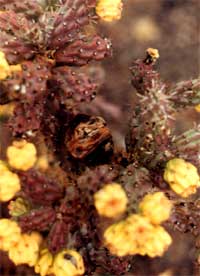
Infinite Ear
Imagine the world
trying to get inside this plant.
Knocking on it
as one would on a sealed chamber.
The spines snarl angrily
like dogs chained to a doorpost.
The meat resists
the hand or the knife,
and when you finally enter
you're already lost in infinity.
In tasture or text,
I mean texture or taste,
in pulchre -
it speaks
back at you hollowly
as if it were its own sound.
Already a magical potion:
maguey, ocotillo, cardenche
mezcal, sotol -
the infinite ear.
*
by Norbert Ruebsaat
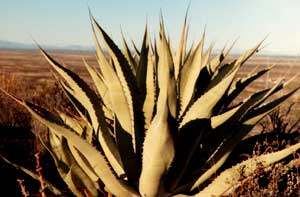
Walking Around
It so happens I'm tired
of walking around.
I'm tired of walking in zig-zags
and curliques
and figure-eights
and circles even
to avoid the plants.
They are after my clothes again;
each plant, I don't care what its Mexican name is,
has spines designed specifically
to attack my gringo clothes.
It is like warfare.
It is a cultural situation:
they don't want me here.
Plants have jaws.
They yell at you.
Get out.
You walk around them gingerly
so as not to disturb them,
to rouse their ire.
It so happens I'm tired of this ire,
of getting yelled at each time I
poke my body into something.
I'm sorry.
Fuck off.
They attach themselves to my pants.
With long langourous strokes
they mournfully tear the shirt off my back.
They want me naked.
And there is a place in a dried up creek bed
where the willow branches have long
golden threads
that stroke you as you pass.
*
by Norbert Ruebsaat
